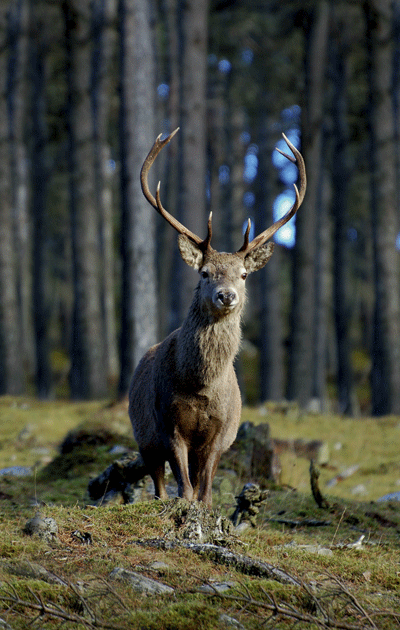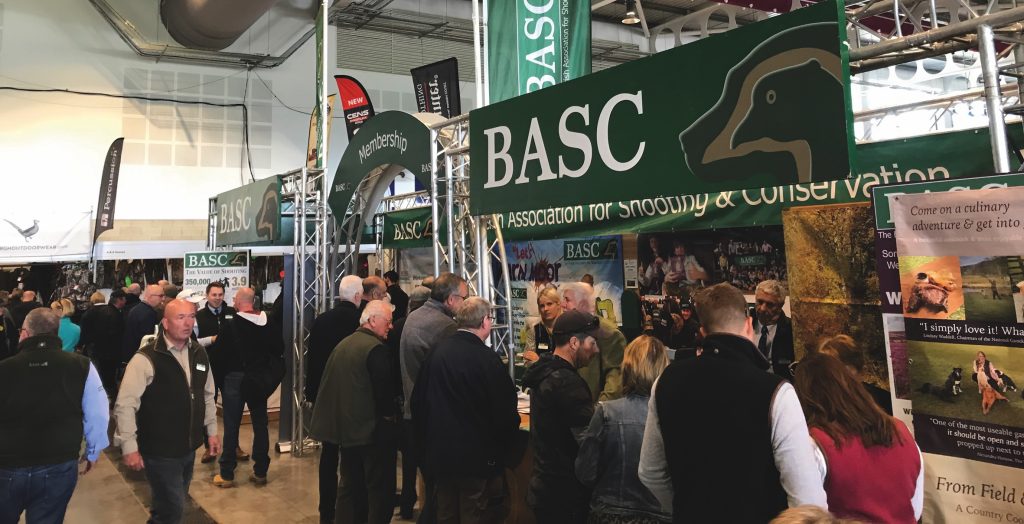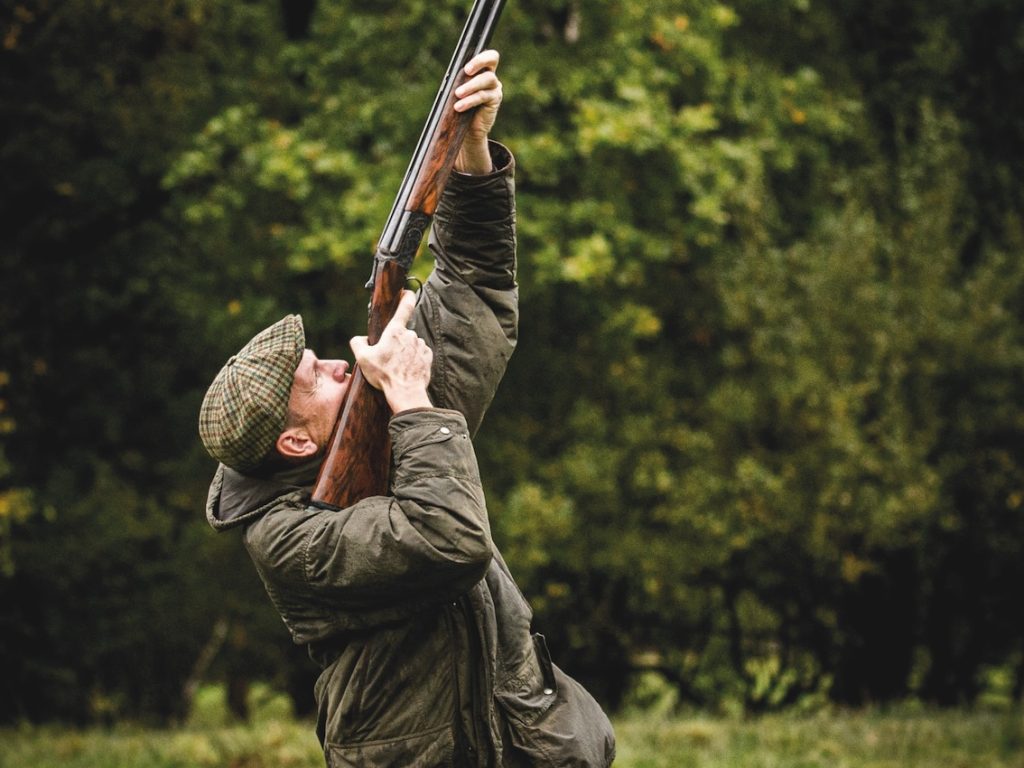Win CENS ProFlex DX5 earplugs worth £1,149 – enter here
Wildlife Estates Scotland: estates prove their worth
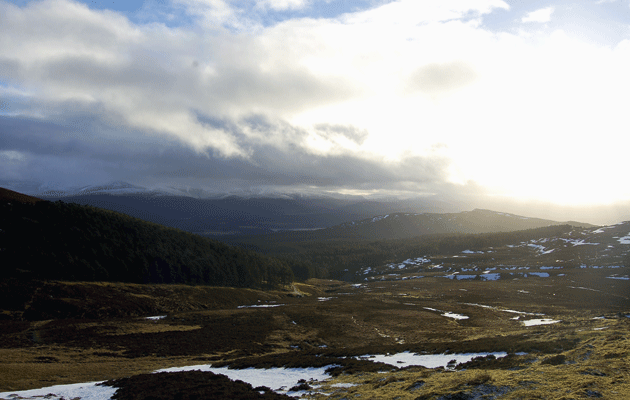
“We’re in a defensive situation: we want to prove what we’re doing, that we’re doing things well and that we’re trying to do things well on an ongoing basis,” says Hugh Campbell Adamson, owner of the 3,000-acre Stracathro estate in Angus.
We’re sitting in the estate office, sipping coffee and sheltering from the wind and horizontal rain. The office is smart, well-ordered and well-organised, with neat rows of files clearly labelled and easily accessible lining its walls. It certainly looks like a well-run place, from the inside. On the wall outside, an even smarter sign gives an indication of Hugh’s dedication to getting the estate’s achievements recognised by the wider public.
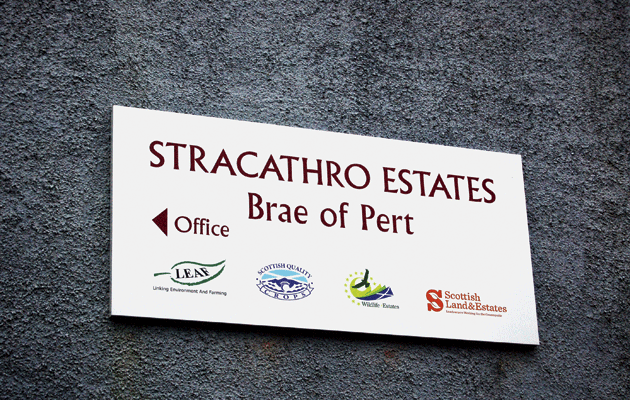
The Wildlife Estates logo publicly celebrates Stracathro’s game and wildlife work
The estate’s commitment to best practice and high environmental and animal welfare standards are shown with accreditation marques from fairly widely known schemes Linking Environment And Farming (LEAF) and Quality Meats Scotland (QMS). Hugh doesn’t see why Stracathro’s sporting business should be any different, so there is another, less well-known, badge on the new sign: this is the Wildlife Estates Scotland, an accreditation scheme that assesses the benefits brought by member estates to the economic and environmental welfare of their local communities.
As the rain continues to lash the new sign, Hugh reveals that he was so keen on the Wildlife Estates programme (see below) that he signed Stracathro up before the scheme had even been set up in Scotland. The Scottish scheme now forms part of a European-wide network, the first links of which were established by the European Landowners’ Organisation (ELO) to provide independent assessment to show the world the environmental and economic benefits of well-run privately owned estates. Stracathro, therefore, became one of the founder members of WES, and Hugh has been on the scheme’s board for the past two-and-a-half years.
Cutting through red tape
Assessments these days are all too often gift-wrapped in red tape and paperwork; did being a pilot estate come with even more trappings than usual, I ask. Hugh admits that there was a significant amount of pen pushing to be got through, and still is, to keep the Wildlife Estates Scotland accreditation valid. However, he feels the extra administrative work is worth it.
According to Hugh, Wildlife Estates Scotland is not really about the financial benefits — for the moment at least. “It’s about disciplined methods and proper planning,” he says. “It sharpens the mind to the fact that land used for sport comes with responsibilities as well as great rewards.” The counting, monitoring and reporting aspects of the scheme are all about learning how to do things properly and demonstrating success where it occurs, he says.
Since carrying out the wildlife survey and monitoring work required of Wildlife Estates Scotland Level Two members, numbers of both brown hares and grey partridges have increased. Benefits seen so far also include improvements to the estate’s deer management activities, both in terms of establishing appropriate targets and holding regular meetings.
In the future, the financial rewards may be more tangible too, Hugh thinks, but only if Wildlife Estates Scotland can gain as much recognition as schemes such as LEAF in the sphere of agriculture. To get to that stage, and really to make a difference, what Wildlife Estates Scotland needs, he says, is the momentum to reach a critical mass of members to increase recognition and respect for its hallmark, and, in turn, inspire more estates to sign up.
Having sat on the board for more than two years, Hugh says its strength is the active nature of its members and of Scottish Land & Estates (SLE). He is optimistic that momentum is building up, especially with extra personnel in the project by SLE and a new facility to help applicant estates with the paperwork.
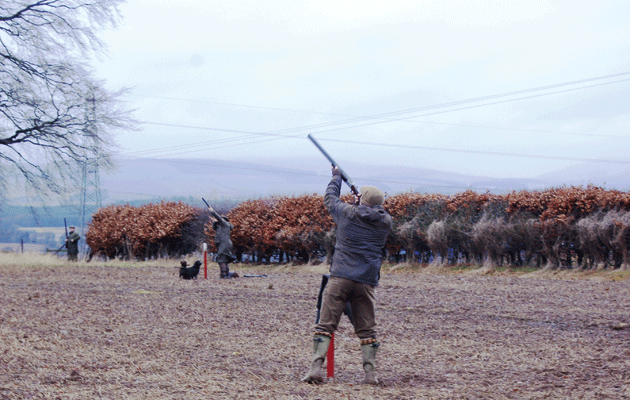
High winds make for good shooting among the hedges at Stracathro
Which is just as well, because while the Scottish Government discusses land reform proposals, privately owned estates need to blow their own trumpets. As Hugh puts it, it’s time for landowners to show politicians that estates are not “private fiefdoms” but “proper businesses” and should be treated as such.
These benefits can be seen in the standard of the sport as we head out to join the Guns, who have already shot two drives while we’ve been mulling over the joys of red tape. The estate currently puts down pheasants and red-legged partridges for 10 days of shooting a year, but it’s moving more towards partridges, which provide particularly good shooting in combination with the seven miles of Victorian beech hedges that flank many of the estate’s relatively flat fields. The hedges provide excellent cover and habitat for the estate’s wild grey partridge population, in which Wildlife Estates Scotland counts have shown an increase recently.
Meanwhile, in the mountains
The previous day, in markedly more hospitable weather, I visited another Wildlife Estates Scotland Level Two estate — Alvie in Invernesshire.
At first glance, Alvie and Stracathro could hardly be more different: Stracathro comprises efficient, flat (relatively speaking), neatly farmed fields in Angus; Alvie is in the majestic heartland of Scottish outdoor tourism, a stone’s throw from the jaw-dropping peaks of the Cairngorms and the equally mind-boggling fashion sense of Scotland’s ski resorts.
The owners are agreed, however, on the need to prove their estate’s worth in a way that holds water both with the public and politicians. Owner of Alvie, Jamie Williamson, admits that the Wildlife Estates Scotland application is a big job but says he’s conscious of the fact that “we [landowners] need to sell ourselves. We need to combat the notion of absentee owners and anti-sporting prejudice.”
Jamie thinks that the Wildlife Estates Scotland scheme can provide a clear demonstration of the estate’s input to the community and the benefits that its activities bring. He sees estates and tourism as closely linked, and estates as vital to local economies and tax revenues, especially in remote areas.
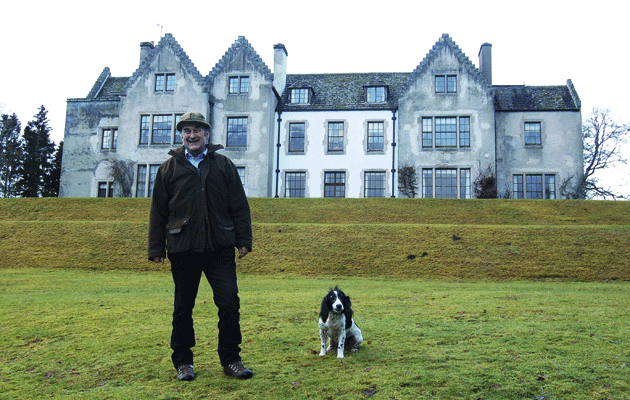
Jamie Williamson, owner of Alvie estate, is no stranger to fighting prejudiced views about landowners
In Jamie’s view, Wildlife Estates Scotland is still developing — it does not yet have the clout it could potentially achieve, for instance in the agricultural sector — but he says Alvie is in it for the long term. In the short term, the scheme helps to concentrate the mind, along with the spectre of land reform. At the moment, he adds, the scheme is also a useful tool in estates’ increasingly important mission to market themselves to those in power. “It’s vital to get through to politicians, to get them on to estates and show them what’s going on,” he stresses. “Estates need to say: ‘Look — we’re part of the economy too!’ and Wildlife Estates Scotland is one way of making that statement.”
And Alvie certainly seems to be part of the local economy: it has to be. Jamie says only around two to five per cent of the estate’s income is from fieldsports. It supports around seven days of driven grouse shooting, plus a few walked-up days per year, but offers no pheasant shooting. Stalking-wise, the estate culls around 25 stags a year and 60 hinds. The number of stags taken has fallen by around a third in recent years due to intensive reduction culls on neighbouring land, Jamie says ruefully.
The bulk of Alvie’s income now flows from its holiday park, forestry, farming and letting the lodge for events. A sizeable selection of local businesses also operates at the estate, offering activities ranging from quad biking and horse riding, to a 2km-long zip wire trail through a stunning gorge. A strawberry farm in the old kitchen garden is now in its 20th year, and produces 10 tons annually.
The close relationship between the estate and these businesses not only enables both to benefit economically and environmentally, but also provides excellent ways to increase awareness of the estate’s work among visitors and locals alike.
One of the best ways of doing this is the deer feeding sessions with Alvie’s gamekeeper and stalker, Graeme Macdonald. Graeme takes guests up into the woods above the dramatic gorge where the zip wire lurks and scatters nuts for the stags. Visitors then get the twin benefits of seeing deer at close quarters and of Graeme’s experience and enthusiasm across a range of topics, including the deer themselves, the sporting side of the estate, Alvie’s resident breeding pair of golden eagles, and wildlife photography. For many, being that close to a gamekeeper is probably as unusual an experience as being so close to the deer, and if they enjoy it, it’ll be infinitely more valuable to estates in general.
The Wildlife Estates scheme
The Wildlife Estates initiative was set up by the European Landowners’ Organisation in 2005 to promote sustainable land management and biodiversity conservation. It is now represented in 17 countries.
The Scottish version of the scheme has been developed by Scottish Land & Estates with advice from Scottish Natural Heritage, the Game & Wildlife Conservation Trust and the Cairngorms National Park Authority. It was launched in November 2010, with 12 estates (including Stracathro) from across the country agreeing to take part in the pilot scheme. The full accreditation scheme was launched in February 2013.
More than 250 estates, farms and land-based businesses have signed up as Level 1 members since then, and there are now more than 20 Level 2 accredited members.
The calibre of the accredited estates was demonstrated last year when Level 2 Wildlife Estates Scotland members won both the Heather Trust’s Golden Plover Award (Finzean in Aberdeenshire) and the Purdey Gold Award for game and conservation (Allargue, also in Aberdeenshire).
The Scottish scheme differs from those in mainland Europe because wildlife and sporting management have been high priorities for large areas of the countryside for a long time, and shooting, stalking and fishing are important and culturally significant forms of land use in their own right, not merely as by-products from other activities.
In England, there is only one Wildlife Estates accredited member — the Holkham estate in Norfolk.
It is relatively simple to become a Level 1 member: an estate pays the registration fee of £60 and signs up to the “Ten Commitments”. These include: to undertake fieldsports activities and manage wildlife sustainably and according to a long-term plan; to comply with all relevant Scottish and European codes of practice and laws; to engage actively with local communities and raise awareness of estates’ work within them, and to work towards Level 2 accreditation.
The Level 2 accreditation process is tougher and involves the collection and submission of detailed data on a variety of species, habitats and their condition, game and wildlife management plans, conservation measures, the integration of game and wildlife management with other activities, and social, employment and other aspects. The assessment is carried out by independent body SFQC, which specialises in adjudicating accreditation schemes in the food and farming sector, including the Quality Meat Scotland and Red Tractor farm schemes. Once an estate is accepted as a Level 2 member, it must continue to monitor the species, habitats, management plans and so on. The fee is £200 for the initial application and annually thereafter.
For more information about the project in Europe, visit www.wildlifeestates.eu. For more about the project in Scotland, visit http://po.st/WES.
Related Articles
Get the latest news delivered direct to your door
Subscribe to Shooting Times & Country
Discover the ultimate companion for field sports enthusiasts with Shooting Times & Country Magazine, the UK’s leading weekly publication that has been at the forefront of shooting culture since 1882. Subscribers gain access to expert tips, comprehensive gear reviews, seasonal advice and a vibrant community of like-minded shooters.
Save on shop price when you subscribe with weekly issues featuring in-depth articles on gundog training, exclusive member offers and access to the digital back issue library. A Shooting Times & Country subscription is more than a magazine, don’t just read about the countryside; immerse yourself in its most authoritative and engaging publication.






